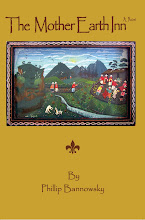I first learned about the literary works of Delaware artist Howard Pyle when I was in junior high school or maybe the higher grades of elementary school. Pyle’s literary works were designed for child readers, many of them retelling older stories about Robin Hood and King Arthur, but some were original stories. For a long time I was led to believe that Pyle was the only literary artist Delaware ever produced. Sometime during my high school or college years I heard about the Milford Bard just before I learned that his name was John Lofland. I was led to believe that his work had been mired in a kind of 19th century parochial literary obsolescence and for a long time I didn’t even bother to find out anything about him. The only thing I learned about Lofland was his reputation, which was promoted as unsavory, and that was outside of any exposure to him in school.
Now, 45 or 50 years later, I’m still on my journey of discovery of Delaware’s literary past—closer to the end of it, I hope, than its beginning. Along the way I’ve discerned why Pyle was promoted over Delaware’s many other literary artists. Pyle was safe. No one would question the world around them as might occur after reading the serious works of Lofland and nearly all the marginalized local literary artists who followed him.
My journey of discovery has been a delightful one for me, discovering that those who populate Delaware’s literary past did not work in isolation. The names of known American literary artists like Edgar Allan Poe, Mark Twain, H. L. Mencken, Paul Laurence Dunbar, F. Scott Fitzgerald and Hart Crane—just for starters—kept popping up in direct connection with those from Delaware who I began to conclude had been unjustly obscured. My delight was peppered with dismay regarding not only the relative unavailability of their works, but the general ignorance of their works by those who should actually have known better, namely those charged with the course of studies for our various educational systems. We can’t depend on local newspapers and magazines to maintain awareness of this segment of our cultural heritage. Unlike visual art and musical and theatrical events, literature does not have the same kinds of social connections. The consumption of literature, with the possible exception of poetry readings, is usually limited by the boundaries of a single press run and consumed within the privacy of personal space.
The more we remove ourselves from formally learning about our literary history and the substance of the literary works that accompany that history, the more superficial and the more vulnerable our cultural identity becomes. We’ve already lost so much. An example can be provided by an adjacent cultural project of mine, that of recovering Wilmington’s rich jazz legacy. It’s generally acknowledged that Wilmington produced one of the greatest jazz musicians who ever to pick up a trumpet, namely Clifford Brown, who is actually a product of many who contributed to the legacy that made his success possible. There had been so much material that could have demonstrated this legacy that contributed to Wilmington’s place in the American history of jazz, but so much of this material was never considered important and, as a result, was relegated to the local landfill by those who saw no importance in saving things like recordings made for broadcast in local radio stations, publicity photographs, copies of articles and handbills and other ephemera that would have told a richer and more lasting story than the sketchy and uncorroborated one handed down to us.
Regarding literary history, here’s another example: I once had a casual conversation with an octogenarian poet in Wilmington, the former Delaware Poet Laureate David Hudson, about Wilmington poet James Whaler, his poetry and his connection to Hart Crane. Whaler’s work has been completely forgotten. Of his two books of really stunning poetry, only a single copy of Hale’s Pond, which was praised publicly by Louis Untermeyer, can be found in the annex of the University of Delaware’s Special Collections. Whaler’s Green River, which was enthusiastically reviewed by Hart Crane, is not to be found in either the Wilmington or University of Delaware libraries. Had I not had that conversation with Hudson, who died seven years ago, I would have known absolutely nothing about Whaler and would not have had the opportunity to rediscover his work in order to share what I had discovered.
The longer we proceed with not preserving aspects of our cultural legacy, the greater the chance of loosing them forever and the more disconnected we get from ourselves as a community.






